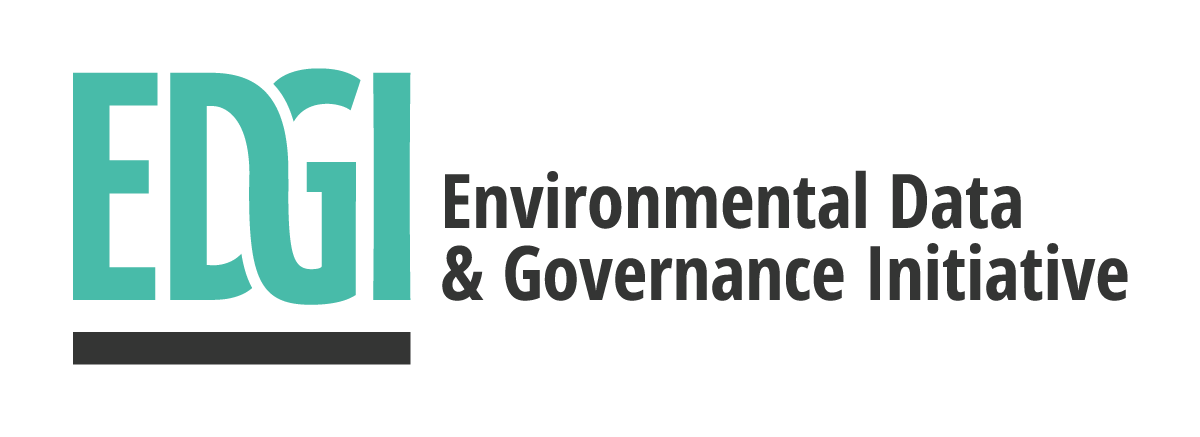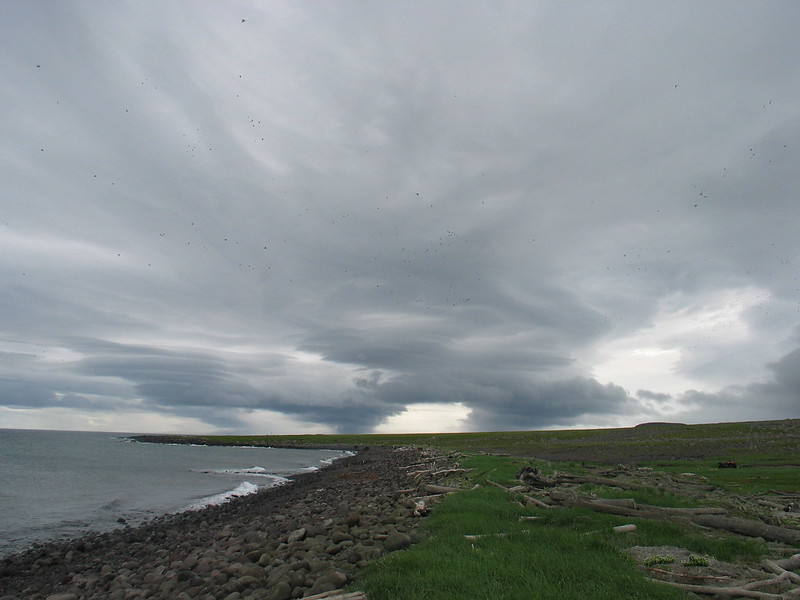Photo by Ian Rose
By Kenneth Wohl, Christopher Sellers, and EDGI
The U.S.’s Cold War build-up on Sivuqaq (St. Lawrence Island) in the Bering Strait region located in Northwestern Alaska, continues to haunt the Indigenous Yupik people in ways that have proven demonstrably and distressingly real. Over the mid-twentieth century, the American military muscled two bases onto this island due to its proximity to the Russian mainland (less than forty miles), drawing in not just military personnel and heavy-duty hardware but hazardous chemicals of unreckoned variety and volume. Though the base at Gambell was shuttered by the 1960s and that on Northeast Cape in 1972, the U.S. Army Corps of Engineers proved slow first in recognizing and then remediating the remaining health and environmental threats. Concerns voiced by the Yupik people by the mid-1980s provoked a pledge by the Corps to clean up what it considered the most hazardous remnants of the Northeast Cape base including abandoned debris, from rubble and concrete to barrels containing human waste, PCBs, pesticides, solvents, and asbestos and heavy metals, all disposed of in unlined landfills. Corps’ spokesman Bruce Batten defended their decision as “rigidly following procedures that are sanctioned by the Environmental Protection Agency.”1 Yet at this time, EPA’s rules for cleaning up hazardous waste sites were themselves brand new, and the Corps’ professed allegiance to them did little to reassure the Yupik people. Fearing the site’s remaining materials could pose as yet unrecognized or calculated environmental risks, they came to realize they themselves needed to take an active role in fighting for their lands and waters and their own health and safety.
Forty years have passed, and the people of Sivuqaq are still fighting for a more thorough clean-up of military wastes remaining on Sivuqaq as they work hand in hand with the Anchorage-based organization Alaska Community Action on Toxics (ACAT). Founded in 1997, ACAT’s involvement on Sivuqaq came about through a collaboration between its founder, scientist and former Greenpeace activist Pam Miller, and Yupik elder Annie Alowa, who had long witnessed the devastating health effects of military waste firsthand. Focused on the “health harms associated with environmental pollution from existing or proposed industrial, resource extraction, or military facilities,”2 ACAT has prodded further governmental actions on Sivuqaq’s military wastes through its own reportage, lobbying, and other policy activism, and in important part through pioneering community-based participatory research (CBPR), in which the local communities collaborate with allied academics to determine the course and outcome of investigations.3 ACAT-nourished collaborations have connected Yupik communities on Sivuqaq to researchers at institutions like the State University of New York at Albany, St. Lawrence University, University of Alaska, University of Oregon, Emory University, Middlebury College, Northern Arizona University, and University of Oregon. They’ve also posed some far-reaching challenges to official assessments of these sites’ risks.
Through such means, ACAT has worked to amplify local concerns, to document and convey to policy-makers just how significant the cumulative environmental burdens borne by Yupik and other Alaskan communities have been. Together they have furnished powerful, peer-reviewed evidence of dangerous chemicals on Sivuqaq, with abnormally high concentrations due in important part to leakage from these military waste site, including persistent organic pollutants such as polychlorinated bi-phenyls (PCBs, with myriad reproductive and developmental as well as probable carcinogenic effects), polybrominated diphenyl ethers (PBDEs, neuro- and thyroid-toxic as well as endocrine-disruptive), now-banned pesticides like Mirex and DDT, as well as heavy metals such as mercury (harmful to the nervous, digestive and immune system). Their studies have also illuminated little-recognized vulnerabilities of Sivuqaq’s Yupik people that advocates and their allies argue should also be taken into account in official decision-making about the military toxic waste sites. The Yupik peoples’ traditional culture means that they rely on locally caught wildlife including fish and marine mammals such as seals, in whose fatty tissue many of these contaminants can bioaccumulate. The Arctic environment also acts as a sink for global emissions of persistent pollutants carried by atmospheric currents and precipitating in the colder climate, where the chemicals fall on land and sea and enter the food chain.4
As ACAT and its local and academic allies have opened new windows on just how substantial the cumulative environmental impacts on Sivuqaq have been, officials running the clean-up of its military wastes have failed to take these many findings into account. The pattern goes back at least to 2003, when an ACAT associated study of PCBs was attacked by Alaska’s Division of Public Health as flawed and politically oriented.5 With the state government resisting the report’s findings, ACAT turned to the local populace and began organizing conferences to educate the people on the environmental health dangers stemming from the government’s neglect of hazardous waste.6 Since then, while this prodding has forced the Army Corps of Engineers to widen its monitoring and undertake some additional remediation, it has generally been “slow to clean up” the waste left behind.7 As recently as the early 2020s—decades after the first reports of health concerns due to the abandoned military sites—the Agency for Toxic Substances and Disease Registry (ATSDR) has defended the Corps’ clean-up.8 Meanwhile, ACAT has continued to conduct studies and publish reports on the dangers and health effects of pollutants from PCBs to Per and Polyfluorinated Substances (PFAS).
Two and a half decades after its founding, ACAT continues to illuminate the environmental justice concerns stemming from chemical contamination, educate the public on its consequences, and work actively on the state, national, and international levels to address these concerns. As of this year, the Environmental Data and Governance Initiative has been joining forces with ACAT as part of its NSF-funded project on “Data, Science, and Environmental Justice at the EPA.” Among the collaborative activities planned, we will be working together to examine ACAT’s experiences trying to get federal environmental officials to take cumulative impacts, like those experienced by Sivuqaq residents, into account. Unpacking the grounds for and dynamics of official resistance, we hope to also explore with ACAT new ways and means through which this resistance may be overcome. “Qerngughulluta Iknaqataghaghtuktuk, Together We Are Stronger” – Vi Waghiyi, Sivuqaq Yupik Grandmother

